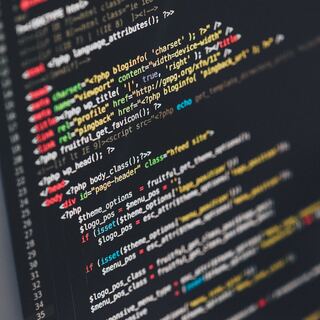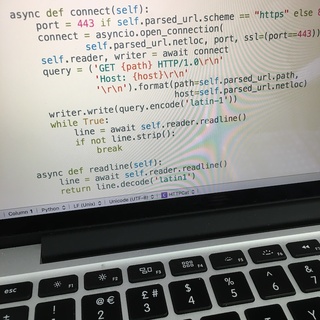☑ That's Good Enough
- Website Maintenance on the Move Mon Sep 19 2016
- Brexit, or Brexit Not — There Is No Try Thu Aug 04 2016
- Responsive Design Tue Aug 02 2016
- The State of Python Coroutines: Python 3.5 Wed Jul 13 2016
- The State of Python Coroutines: asyncio - Callbacks vs. Coroutines Tue Jul 05 2016
- The State of Python Coroutines: Introducing asyncio Thu Jun 16 2016
- The State of Python Coroutines: yield from Fri Jun 10 2016
September 2016

☑ Website Maintenance on the Move
I write most of my blog articles and make other changes to my site whilst on my daily commute. The limitations of poor network reception different hardware have forced me to come up with a streamlined process for it and I thought it might be helpful to share in case it’s helpful for anyone else.
Read article ( 9 minutes )
August 2016

☑ Brexit, or Brexit Not — There Is No Try
I voted against Brexit as I feel the UK is significantly better within the EU. However, the looming uncertainty over whether the UK will follow through is much worse than either option.
Read article ( 6 minutes )

☑ Responsive Design
My website now looks hopefully very slightly less terrible on mobile devices, and I learned a few things getting there.
Read article ( 14 minutes )
July 2016

☑ The State of Python Coroutines: Python 3.5
I recently spotted that Python 3.5 has added yet more features to make coroutines more straightforward to implement and use. Since I’m well behind the curve I thought I’d bring myself back up to date over a series of blog posts, each going over some functionality added in successive Python versions — this one covers additional syntax that was added in Python 3.5.
This is the 4th of the 4 articles that currently make up the “State of Python Coroutines” series, the first of which was The State of Python Coroutines: yield from.
Read article ( 11 minutes )

☑ The State of Python Coroutines: asyncio - Callbacks vs. Coroutines
I recently spotted that Python 3.5 has added yet more features to make coroutines more straightforward to implement and use. Since I’m well behind the curve I thought I’d bring myself back up to date over a series of blog posts, each going over some functionality added in successive Python versions — this one covers more of the asyncio module that was added in Python 3.4.
This is the 3rd of the 4 articles that currently make up the “State of Python Coroutines” series, the first of which was The State of Python Coroutines: yield from.
Read article ( 16 minutes )
June 2016

☑ The State of Python Coroutines: Introducing asyncio
I recently spotted that Python 3.5 has added yet more features to make coroutines more straightforward to implement and use. Since I’m well behind the curve I thought I’d bring myself back up to date over a series of blog posts, each going over some functionality added in successive Python versions — this one covers parts of the asyncio module that was added in Python 3.4.
This is the 2nd of the 4 articles that currently make up the “State of Python Coroutines” series, the first of which was The State of Python Coroutines: yield from.
Read article ( 7 minutes )

☑ The State of Python Coroutines: yield from
I recently spotted that Python 3.5 has added yet more features to make coroutines more straightforward to implement and use. Since I’m well behind the curve I thought I’d bring myself back up to date over a series of blog posts, each going over some functionality added in successive Python versions — this one covers the facilities up to and including the yield from syntax added in Python 3.3.
This is the 1st of the 4 articles that currently make up the “State of Python Coroutines” series.
Read article ( 9 minutes )
